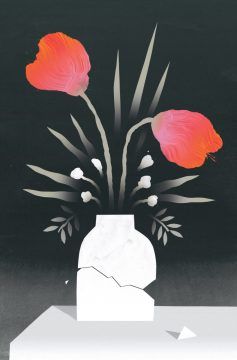Tracy O’Neill in The Baffler:
 Though domestic violence constitutes one of the direst public health and criminal justice crises in the country, its gravity has been a belated and recent revelation in the American psyche, one many would still consider provisional. Around one in four American women will be harmed by a partner over the course of their lives, and while violent crime has declined in recent years, homicides due to domestic violence have not. Over half of the women killed in this country are killed by a loved one. Covid-19’s stay-at-home orders have left those suffering domestic violence more cut off from resources to protect them from abuse, including formal services like health care and shelters, as well as sites of informal social control like public playgrounds and churches, which have been shown to regulate the occurrence of abuse.
Though domestic violence constitutes one of the direst public health and criminal justice crises in the country, its gravity has been a belated and recent revelation in the American psyche, one many would still consider provisional. Around one in four American women will be harmed by a partner over the course of their lives, and while violent crime has declined in recent years, homicides due to domestic violence have not. Over half of the women killed in this country are killed by a loved one. Covid-19’s stay-at-home orders have left those suffering domestic violence more cut off from resources to protect them from abuse, including formal services like health care and shelters, as well as sites of informal social control like public playgrounds and churches, which have been shown to regulate the occurrence of abuse.
While “wife beating” has been illegal in every state since 1920, it was, until the 1970s, a crime often treated as a marginal misfortune. Its prohibition went largely unenforced by police and prosecutors. Psychologists tended to label survivors narcissistic, labile, and irresponsible. It took two to tango, the prevailing attitude held, and authorities were generally unwilling to step in to end the dance.
The battered women’s movement, as it was then known, emerged in the 1970s to advocate for the interests of those harmed. The first shelter in the United States opened in St. Paul, Minnesota, in 1974. Six years later, Ellen Pence, a feminist activist who would go on to earn her doctorate in sociology, co-founded the Domestic Abusive Intervention Project (DAIP). At once learned and funny, Pence bantered with judges, told irreverent jokes, and her warmth served her ambitious vision of building a “coordinated community response” to abuse, encompassing measures such as systematic arrest of offenders, court action, probation, resources for victim support, and auxiliary social services.
More here.
